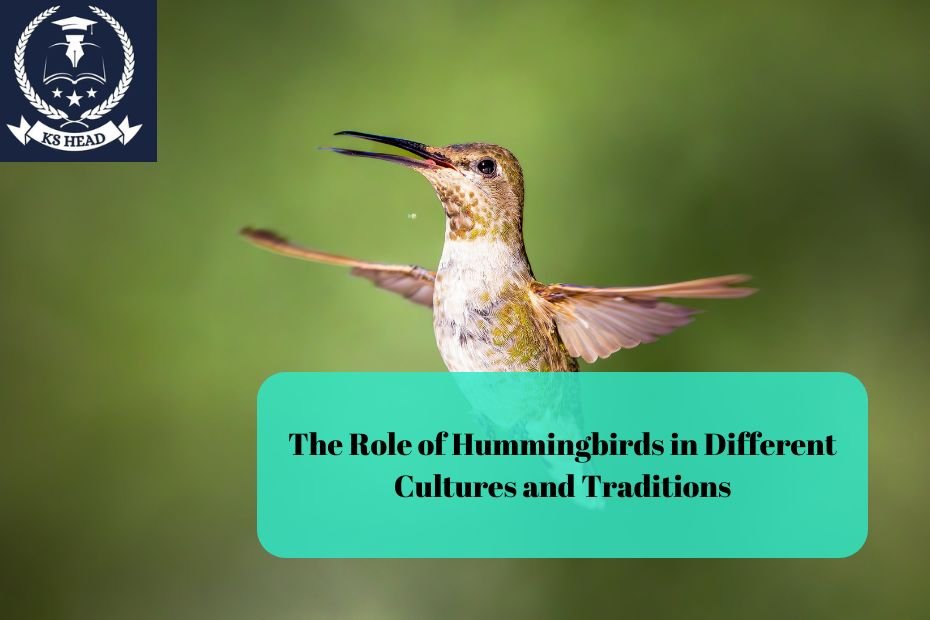Hummingbirds are not only marvels of nature due to their vibrant colors and remarkable flying abilities, but they also hold significant cultural importance across various societies. These small, agile birds are often seen as symbols of joy, love, and resilience. In this article, we will explore the role of hummingbirds in different cultures and traditions around the world, examining their symbolism, myths, and practices associated with them.
1. Hummingbirds in Native American Culture
1.1 Symbol of Love and Happiness
In many Native American tribes, hummingbirds are revered as symbols of love, happiness, and joy. The Hummingbird is often associated with love because of its vibrant colors and its habit of visiting flowers to extract nectar. Many tribes believe that the hummingbird carries love from one person to another.
For instance, the Zuni tribe in the southwestern United States has long regarded the hummingbird as a spiritual guide. They associate it with positive energy, and it is said that when hummingbirds are present, they bring messages of love and happiness from the spirit world.
1.2 Medicine and Healing
Some Native American tribes also view hummingbirds as symbols of healing. They believe that the bird’s rapid movements and agility can help to transfer energy and promote wellness. In certain healing rituals, feathers or images of hummingbirds are used to invoke healing energies and enhance the effectiveness of the treatment.
2. Hummingbirds in Aztec and Maya Cultures
2.1 Mythological Significance
In the ancient Aztec civilization, hummingbirds were deeply embedded in mythology. The Aztecs associated the hummingbird with the sun god, Huitzilopochtli. They believed that the souls of fallen warriors transformed into hummingbirds, enabling them to seek nectar from flowers and find their way back to the sun. This connection made hummingbirds a powerful symbol of strength and courage.
Similarly, the Maya also revered hummingbirds. They believed that these birds were messengers of the gods and symbols of resurrection. The Maya’s concept of life and death included the idea that souls could transform into hummingbirds, symbolizing rebirth and renewal.
2.2 Artistic Representation
Hummingbirds have been represented in various forms of art, including pottery, murals, and carvings, showcasing their importance in ancient Mesoamerican cultures. These representations often reflect the birds’ beauty, speed, and association with the divine.
3. Hummingbirds in South American Traditions
3.1 Andean Culture
In Andean cultures, particularly among the indigenous peoples of Peru and Bolivia, hummingbirds are considered symbols of good luck and prosperity. They are often featured in traditional textiles and handicrafts. The Quechua people believe that hummingbirds bring abundance and fertility, making them significant in agricultural rituals.
3.2 A Symbol of Resilience
The resilience of hummingbirds is also celebrated in many South American traditions. Their ability to hover in place, move quickly, and adapt to different environments serves as a powerful metaphor for overcoming adversity. The image of the hummingbird is often used in storytelling and folklore to inspire individuals to persevere in the face of challenges.
4. Hummingbirds in Modern Spirituality
4.1 Symbols of Joy and Lightness
In contemporary spirituality, hummingbirds are frequently seen as symbols of joy, lightness, and positivity. Many people believe that seeing a hummingbird is a sign of good luck or a message from a loved one who has passed away. In this context, hummingbirds represent the idea that life should be celebrated and enjoyed.
4.2 Meditative Practices
Hummingbirds are also incorporated into meditation and mindfulness practices. Their graceful movements and ability to remain present in the moment serve as inspiration for those seeking tranquility and balance in their lives. Meditators often use imagery of hummingbirds to focus their minds and cultivate a sense of peace.
5. Hummingbirds in Asian Cultures
5.1 Chinese Symbolism
In Chinese culture, hummingbirds are associated with love and affection. They are often depicted in art and literature as symbols of deep emotional connections and romantic love. In some traditions, it is believed that hummingbirds can bring couples together and strengthen their relationships.
5.2 Japanese Culture
In Japan, the hummingbird is seen as a symbol of joy and happiness. The Japanese have a deep appreciation for nature and often incorporate elements of the natural world into their art and poetry. Hummingbirds are celebrated for their beauty and grace, embodying the idea of finding joy in life’s fleeting moments.
6. Hummingbirds in Popular Culture
6.1 Literature and Film
Hummingbirds have made their way into popular culture, appearing in literature, movies, and art. They are often used as symbols of love, freedom, and the beauty of nature. Books such as The Hummingbird’s Daughter by Luis Alberto Urrea highlight the bird’s cultural significance and its role as a symbol of hope and resilience.
In film and animation, hummingbirds are depicted as magical creatures that bring happiness and joy to characters, reinforcing their association with positive emotions and experiences.
6.2 Merchandise and Branding
The imagery of hummingbirds is frequently used in merchandise, from jewelry to clothing, symbolizing beauty, love, and freedom. Brands often adopt hummingbird motifs to convey messages of positivity and vitality, appealing to consumers’ emotions.
7. Conservation and Cultural Significance
7.1 Cultural Heritage and Conservation
As urbanization and environmental changes threaten the habitats of hummingbirds, various cultures are beginning to recognize the importance of conservation efforts. Indigenous and local communities are increasingly involved in initiatives to protect hummingbird habitats and promote sustainable practices.
Efforts to raise awareness about the cultural significance of hummingbirds can encourage communities to engage in conservation efforts. By celebrating the roles hummingbirds play in different cultures, we can foster a sense of responsibility to protect these incredible birds and their environments.
7.2 Educational Initiatives
Educational programs that focus on the cultural significance of hummingbirds can also contribute to conservation efforts. Schools and community organizations are increasingly incorporating lessons about the importance of hummingbirds into their curricula, highlighting their roles in ecosystems and cultural traditions.
Conclusion
Hummingbirds hold a unique and profound place in the hearts and minds of people across various cultures and traditions. From their symbolism of love and joy to their roles in mythology and spirituality, these remarkable birds inspire us in countless ways. As we continue to learn about the cultural significance of hummingbirds, it becomes essential to protect and preserve their habitats for future generations to appreciate. By honoring the legacy of hummingbirds in our traditions, we contribute to a world that celebrates the beauty of nature and the interconnectedness of all living beings.
FAQs
1. What do hummingbirds symbolize in Native American cultures?
In Native American cultures, hummingbirds symbolize love, happiness, and healing. They are often seen as spiritual guides that carry messages from the spirit world.
2. How are hummingbirds represented in Aztec mythology?
In Aztec mythology, hummingbirds are associated with the sun god Huitzilopochtli, and it is believed that the souls of fallen warriors transform into hummingbirds.
3. Why are hummingbirds considered symbols of resilience?
Hummingbirds demonstrate resilience through their ability to adapt to various environments and overcome challenges, serving as a metaphor for perseverance in many cultures.
4. What role do hummingbirds play in modern spirituality?
In modern spirituality, hummingbirds are symbols of joy, lightness, and good luck. They are often seen as messages from loved ones or reminders to enjoy life.
5. How can cultural awareness contribute to hummingbird conservation?
Cultural awareness can inspire communities to engage in conservation efforts by highlighting the importance of hummingbirds in traditions, encouraging sustainable practices, and protecting their habitats.

